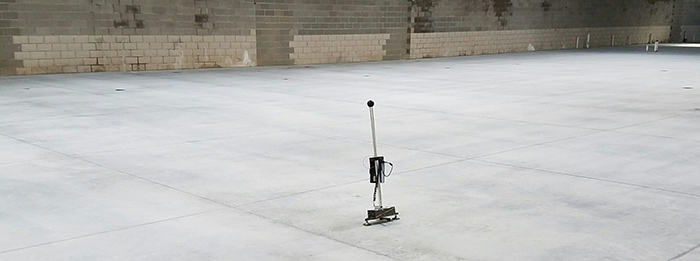What are F-numbers, and why do they Matter?
F-numbers, determined in accordance with ASTM E 1155, are the widely accepted measurements for evaluating flatness and levelness of concrete slabs. Modern-day floor flatness and levelness test methods have made life easier for designers and end users of facilities with concrete floor slabs. In the not too distant past, concrete floor flatness was measured by laying a ten-foot straightedge on a finished floor and measuring the gap between the straightedge and the concrete over the span. If the gap was measured to be 1/8th inch or less it was commonly considered to meet specifications.
As you can guess, this method was not very reliable. Measuring floor flatness with the straightedge method typically resulted in uneven floors which caused many unforeseen problems. You might be wondering how problematic can uneven floors really be? Turns out they can cause some major problems, including:
- Profit loss of distributors and manufacturers due to damaged forklifts used to move product
- Loss of product due to uneven floors near product racking areas
- Lost productivity due to employee injuries as a result of unsafe transporting of product

How does it work?
Since then, more reliable methods have developed utilizing point-to-point measurements that produce data which can be used to develop a profile of the surface being measured in the form of a graph. As point-to-point measurements are obtained and data collected, differences in elevations at each point are recorded and visually represented by wavelengths. Multiple measurements are obtained throughout the field of the concrete floor surface. The data is collected using a floor profiler or equivalent.
The data is translated into usable results by utilizing the F-Number System developed by the American Concrete Institute (ACI 117) and the Canadian Standards Association (CSA A23.1) standard for the specifications and measurement of concrete floor flatness. FF Numbers represent floor flatness and FL Numbers represent floor levelness.
Measuring Floor Flatness and Levelness
Typical FF and FL values for lightly-trafficked office/industrial buildings are 25 and 20 respectively; warehouse floors with moderate or heavy traffic range from 35 and 25; and movie and television studios are >50 and >50. Overall FF and FL values, individual test runs and required local minimum values are both considered when evaluating compliance with specifications designed to accommodate the use of the facility.
FF and FL numbers will diminish with time as joint shrinkage and slab curling occur making floors less flat. For this reason, flatness and levelness testing is recommended within 24-hours after concrete placement, but no later than 72 hours to achieve accurate results.
Improved floor flatness can help your bottom-line and support a safe environment for employees. Braun Intertec has performed floor flatness/levelness tests on a variety of industrial and commercial buildings throughout Iowa, Kansas, Louisiana, Minnesota, North Dakota, Texas, and Wisconsin. Using this test data we can assess whether our readings meet your project specifications.
